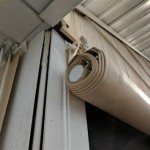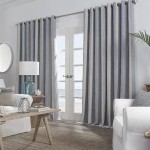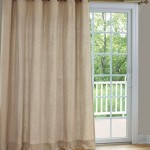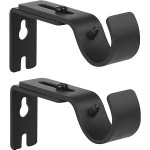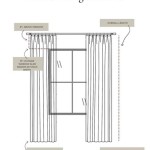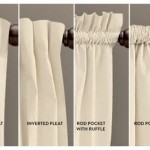The Comprehensive Guide to 72-Inch Tension Curtain Rods
Tension curtain rods offer a versatile and damage-free solution for hanging curtains, draperies, and lightweight fabrics without the need for drilling or hardware installation. A 72-inch tension curtain rod is particularly useful for windows and spaces that fall within a specific width range, offering a secure and adaptable way to enhance privacy, block light, and add aesthetic appeal to any room. This article delves into the features, benefits, considerations, and proper installation techniques associated with utilizing a 72-inch tension curtain rod.
The primary advantage of a tension curtain rod lies in its ease of installation and removal. Unlike traditional curtain rods that require brackets screwed into the wall, a tension rod utilizes spring tension to hold itself in place within the window frame or between two walls. This makes it an ideal choice for renters, dorm rooms, or any situation where permanent fixtures are undesirable or prohibited. The 72-inch size provides a substantial span, suitable for many standard-sized windows and doorways, while maintaining the flexibility that defines tension-based systems.
Choosing the appropriate tension curtain rod involves several factors, including the weight of the curtains, the desired aesthetic, and the specific dimensions of the space. A 72-inch rod isn't necessarily fixed at that exact length; most tension rods are adjustable within a certain range. For example, a rod might extend from 48 inches to 84 inches, making it adaptable to various window sizes. Confirming the adjustability range and ensuring that your window width falls comfortably within that range is a critical first step. Furthermore, evaluating the rod's weight capacity is paramount to prevent sagging or collapse, especially when hanging heavier fabrics.
Understanding the Mechanics of Tension
The fundamental principle behind a tension curtain rod is the exertion of opposing forces against two surfaces. A spring or telescopic mechanism inside the rod creates outward pressure, which, when compressed and placed within a frame, generates friction against the walls. This friction, combined with the inherent spring force, holds the rod securely in place. The effectiveness of this mechanism is largely dependent on the quality of the spring or telescoping system and the surface material it's pressed against. Smooth, non-porous surfaces generally provide a better grip than textured or painted surfaces.
The design of the rod's end caps also plays a significant role in its stability. End caps made of rubber or other high-friction materials enhance the grip and prevent slippage. Larger end caps distribute the pressure more evenly across the surface, which is especially important when dealing with heavier curtains. Conversely, smaller or hard plastic end caps may be more prone to sliding, particularly on slick surfaces. Inspecting the quality and material of the end caps before purchase is thus a critical consideration.
Over-tightening the rod is a common mistake that can lead to damage to the walls or window frame. While it might seem that applying more pressure will increase stability, excessive force can actually reduce friction by causing the end caps to deform or slip. The goal is to achieve a snug fit that provides sufficient support without stressing the surrounding structures. Regular adjustments may be necessary, especially during seasonal changes in temperature and humidity, which can affect the materials' expansion and contraction.
Factors to Consider When Selecting a 72-Inch Tension Curtain Rod
Beyond the mechanics, several practical considerations come into play when selecting the ideal 72-inch tension curtain rod. This includes assessing the weight capacity, material composition, aesthetic style, and ease of installation. A mismatch between these factors and the intended use can lead to unsatisfactory results or even safety hazards.
The weight capacity is arguably the most crucial factor. Lightweight sheers or voile curtains require significantly less support than blackout curtains or heavy drapes. Most manufacturers specify the maximum weight capacity of their tension rods, typically in pounds or kilograms. It's prudent to overestimate the weight of your curtains to ensure an adequate safety margin. Exceeding the weight limit can not only cause the rod to sag or fall but also potentially damage the window frame or walls.
The material of the tension rod also influences its durability and aesthetic appeal. Common materials include steel, aluminum, and plastic. Steel rods are generally the strongest and most durable, making them suitable for heavier curtains. Aluminum rods offer a good balance of strength and weight, while plastic rods are the least expensive but also the least robust. The finish of the rod, such as chrome, brushed nickel, or painted, should complement the décor of the room. Consider the resistance of the material to rust and corrosion, especially in humid environments like bathrooms or kitchens.
The aesthetic style of the tension rod should also blend seamlessly with the overall design of the space. Tension rods are available in a wide variety of styles, from minimalist and modern to ornate and traditional. Choose a style that complements the curtains and the existing hardware in the room. The diameter of the rod also contributes to its visual impact; thicker rods tend to appear sturdier and more substantial, while thinner rods offer a more subtle and streamlined look.
Proper Installation and Maintenance of a 72-Inch Tension Curtain Rod
Even the highest-quality 72-inch tension curtain rod will perform poorly if not installed correctly. Proper installation ensures stability, prevents damage, and maximizes the lifespan of the rod. Likewise, regular maintenance can help to prevent issues such as sagging, slippage, or corrosion.
Before installation, thoroughly clean the surfaces where the end caps will make contact. Dust, dirt, or grease can reduce friction and compromise the rod's grip. Use a mild cleaning solution and a clean cloth to wipe down the surfaces, ensuring they are completely dry before proceeding. Measure the width of the window frame or the distance between the walls where the rod will be installed. This measurement will help you adjust the rod to the appropriate length.
Extend the tension rod slightly beyond the measured width. This will allow you to compress the spring or telescoping mechanism and create the necessary tension. Carefully position the rod at the desired height and angle, ensuring that it is level. Gently compress the rod and insert it into the space, releasing the pressure gradually to allow the end caps to grip the surfaces. Avoid over-tightening the rod, as this can damage the walls or the rod itself.
Once the rod is in place, test its stability by lightly pulling on it. If it feels loose or unstable, make small adjustments to the length and pressure until it feels secure. Hang the curtains or draperies and recheck the stability, ensuring that the rod can support the weight without sagging or slipping. Periodically inspect the rod for signs of wear or corrosion. Clean the rod with a soft cloth and a mild cleaning solution as needed. Lubricate the spring or telescoping mechanism with a silicone-based lubricant to prevent sticking or binding.
If the tension rod frequently slips or falls, consider adding additional support measures, such as adhesive grip pads or mounting brackets. Grip pads provide extra friction between the end caps and the surfaces, while mounting brackets offer a more permanent and secure attachment. However, be mindful that these measures may negate the "damage-free" benefit of using a tension rod in the first place.
In summary, a 72-inch tension curtain rod represents a convenient and adaptable solution for hanging curtains and draperies. By carefully considering factors such as weight capacity, material composition, and installation techniques, users can maximize the benefits of this versatile hardware and enhance the aesthetics and functionality of their living spaces.

Moen Shower Tension Rod Brushed Nickel Tr1000bn

Home Decorators Collection Twist And Fit No Tools 42 In To 72 Steel Adjustable Spring Tension Utility Rod White Hdutlyl 1 The

Kenney Twist Fit No Tools Tension Shower Curtain Rod 42 72 Brushed Nickel

Dracelo 72 In Stainless Steel Tension Mounted Adjustable Heavy Duty Spring Shower Curtain Rod Matte Black B08z7gqt4r The Home

Moen 72 In Adjustable Straight Decorative Tension Shower Rod Brushed Nickel Tr1000bn The Home

Tension Adjustable Shower Rod In Matte Black 42 Inch To 72

Tension Adjustable Shower Rod In Matte Black 42 Inch To 72

Unconsil Curved Adjustable 48 To 72 Inch Shower Curtain Rod Black Rustproof And Corrosion Resistant

Origin 21 42 In To 72 Matte Black Tension Single Straight Adjustable Shower Curtain Rod Shlsns09mb At Com

Graber Shower Spring Tension Curtain Rod 42 72 Inch

